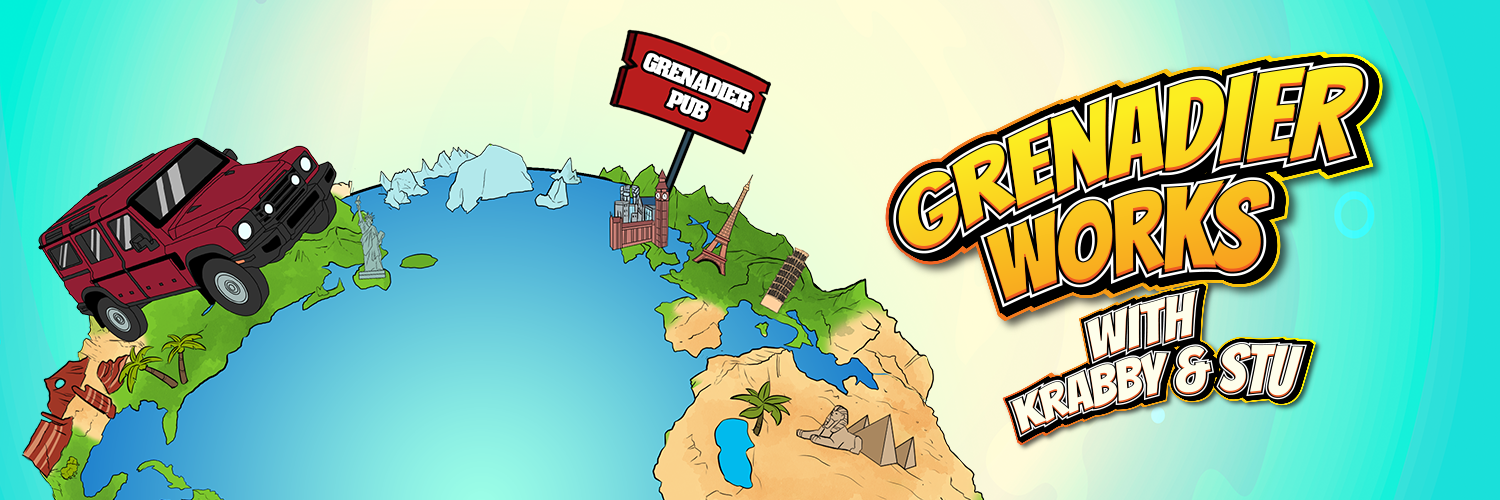Haven't had my tea yet - thought you said "drifting through the bedroom." Ha!Which is a good thing as my wife says I'm to complacent and inattentive when driving on roads. Having to focus on steering might stop my mind drifting through boredom
The Grenadier Forum
Register a free account today to become a member! Once signed in, you'll be able to contribute to the community by adding your own topics, posts, and connect with other members through your own private inbox! INEOS Agents, Dealers or Commercial vendors please contact admin@theineosforum.com for a commercial account.
You are using an out of date browser. It may not display this or other websites correctly.
You should upgrade or use an alternative browser.
You should upgrade or use an alternative browser.
Steering- example- 70 series Landcruiser
- Thread starter MrMike
- Start date
Not at my age, boredom is all my mind can cope withHaven't had my tea yet - thought you said "drifting through the bedroom." Ha!
Recirculating ball is essentially the same as Saginaw steering. Jeep CJ to the current Wrangler uses the same basic design. Only problem I have ever encountered was a leaking seal at the shaft input that was fixed with some steering fluid conditioner. True, it does not have the modern rack and pinion agility, but in my experience can rival the rack and pinion with modest tuning such as a quality or larger steering stabilizer, balanced tires, bigger but not too big tires, caster corrections and alignment. There is also a new type steering stabilizer that drives the steering to center by using two shocks. For example: https://www.etrailer.com/p-RM87RR.html?hhyear=2009&hhmake=Jeep&hhmodel=Wrangler+Unlimited
I’ve never used that specific setup but there are a multitude of other universal options.
Just some (hopefully) helpful insight.
I’ve never used that specific setup but there are a multitude of other universal options.
Just some (hopefully) helpful insight.
Last edited:
Why did you left out the Defender type of steering? A worm type...when I remember 3,5 turns lock to lock and also enough play to calm down the steering wheel in offroad use, but less parts which wear out.I have really appreciated members of this forum from all over the world participating in English - so I'd like to try to help out.
"Play" in the steering refers to the following: you are driving straight down the road with no intention of turning left or right, but you can move the steering wheel a little bit to the left and a little bit to the right without it have any effect on the front tires - they still point straight.
The opposite of play is "tight" steering, in which any small input to the steering wheel directly results in change to the direction of the front tires.
Vehicles with "rack and pinion steering" tend to have tight steering, while vehicles with "recirculating ball steering" tend to have some play. This is by design. When driving a sports car through turns, one wants tight steering. However, when off road, tight steering results in too much feedback being delivered from the front tires to the steering wheel, in the form of the steering wheel violently jerking in one direction or another. This is exhausting for the driver, and can even result in the driver suffering minor injury. Recirculating ball steering reduces this feedback. In addition, recirculating ball steering is much more durable when subjected to off road use.
How much play there is can be measured (roughly). Can you turn the wheel an inch in one direction without it affecting the tires? Two inches?
How much play is acceptable is subjective, and varies from one person to another.
In a recirculating ball set up, play can increase over time as various parts in the steering system get worn: the steering box itself, the ball joints, and the bushings in the front end are all prime candidates for wear. The rate at which these things get worn depends on how the vehicle is driven. Putting larger tires on a vehicle dramatically increases the rate at which they will get worn.
The diagram below is from a Jeep JK, but the set up is quite similar to the Grenadier. There are bushings at the ends of the tie rod and drag link, and these seem to be most vulnerable to wear, resulting in increased play in the steering. You can't see the ball joints in this diagram, but quality of ball joints varies dramatically. For example, stock ball joints in the Ram 2500/3500 and stock ball joints in Jeep Wranglers tend to wear quickly, while some aftermarket ball joints (e.g. Carli, Dynatrac) are much more robust, and come with a lifetime warranty.
View attachment 7803080
Info on Jeep JK ball joints here (location and function similar to Grenadier): https://jeeprunner.com/best-jeep-jk-ball-joints/
In a Jeep Wrangler, the amount of play in the steering can be reduced by increasing the strength of the steering box and its mountings, the strength of the front end components (tie rod, drag link, track bar), increasing the quality of the ball joints, and the quality of the bushings. All of this can be done through the aftermarket, due to the number of people who up-size their tires.
Most of the front end components in the Grenadier seem very strong, so there probably won't be much room for improving those. We know nothing about the quality of the ball joints and bushings, so that - at this point - is an unknown variable. There may be aftermarket solutions to play in the Grenadier's steering, or most buyers may decide that the amount of play is acceptable.
AWo
Does anyone on here that has, or had, a Jeep Wrangler 2007 and up, have comparison information to the IG steering?
Does anyone on here that has, or had, a Jeep Wrangler 2007 and up, have comparison information to the IG steering?
Would you consider a comparison to a JT Gladiator?
In comparison to a JT the steering is similar in some ways, and not at all in others. Off road, it is notably smoother to drive the Grenadier, the steering feel is more connected and less rough. On road, the Grenadier is also smoother, more "sure" (maybe more accurate?) with steering inputs, both on straight sections and windy sections. I've only driven a few hundred miles in a JT (rental), but the Grenadier has a much "heavier" steering feel (I don't mean heavier as in harder or more vague to turn, it just feels very solid and planted at all times). I'm sure that has to do with the tire choices and overall frame/structure as well; but a quick lane change at speed in the JT and it's a bit of a hairy experience, the Grenadier feels just as comfortable doing quick lane changes as it does going through a dirt laneDoes anyone on here that has, or had, a Jeep Wrangler 2007 and up, have comparison information to the IG steering?
While I can't comment in driving a Jeep, I do agree with all that you have said regarding the IG. The 70 series is nothing like the IG also. I think IA spent much more on suspension tuning than most. Which then concerns me as it will be all thrown out the window if its lifted. (Not that I intend to do so)In comparison to a JT the steering is similar in some ways, and not at all in others. Off road, it is notably smoother to drive the Grenadier, the steering feel is more connected and less rough. On road, the Grenadier is also smoother, more "sure" (maybe more accurate?) with steering inputs, both on straight sections and windy sections. I've only driven a few hundred miles in a JT (rental), but the Grenadier has a much "heavier" steering feel (I don't mean heavier as in harder or more vague to turn, it just feels very solid and planted at all times). I'm sure that has to do with the tire choices and overall frame/structure as well; but a quick lane change at speed in the JT and it's a bit of a hairy experience, the Grenadier feels just as comfortable doing quick lane changes as it does going through a dirt lane
Similar threads
- Replies
- 58
- Views
- 4K
- Replies
- 25
- Views
- 1K
- Replies
- 258
- Views
- 12K



